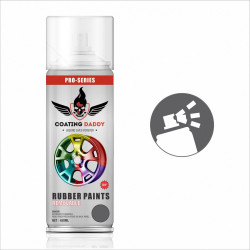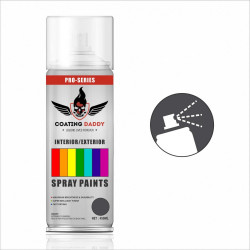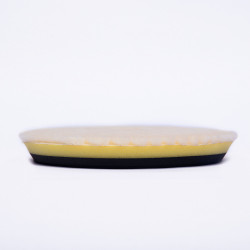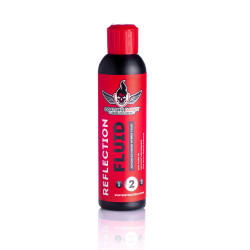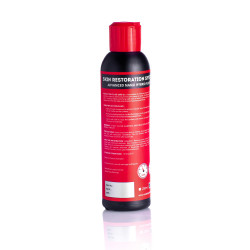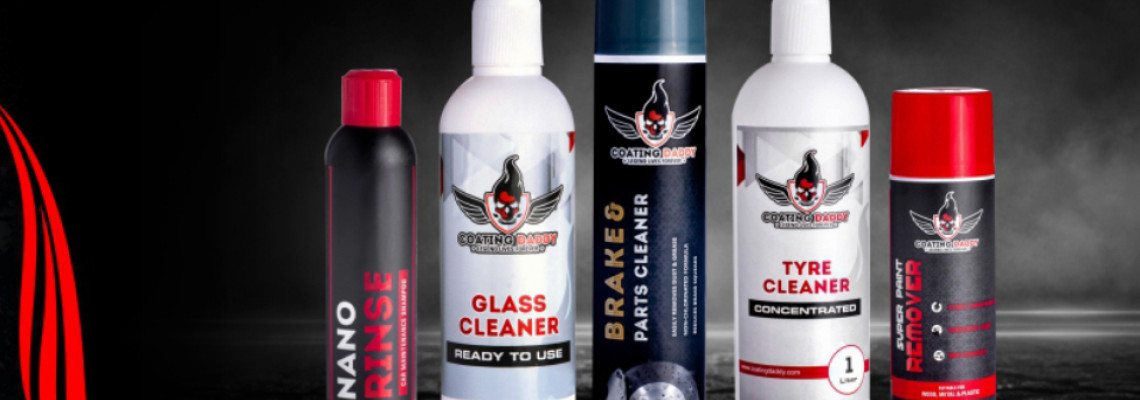
Ceramic coatings have exploded in popularity among car and bike owners worldwide, thanks to their promise of stunning shine, long-lasting protection, and ease of maintenance. Yet, as with many automotive trends, this surge in interest has also given rise to numerous myths and misunderstandings.
Whether you're a first-time car owner, a motorcycle enthusiast, or someone exploring ways to protect your vehicle, it's essential to separate fact from fiction. Believing these myths can lead to disappointment, wasted money, or even damage to your vehicle's finish.
In this detailed guide, we'll uncover and debunk the 10 most common myths about ceramic coatings—so you can make an informed decision and truly understand what ceramic coatings can and cannot do.
Myth 1: Ceramic coatings make your car completely scratch-proof
It's one of the most common marketing misconceptions: that ceramic coatings will magically make your car or bike immune to scratches.
While high-quality ceramic coatings do offer excellent hardness—often measured as "9H hardness" on the pencil scale—this doesn't mean your vehicle becomes scratch-proof. The coating can resist light swirl marks, minor abrasions, and superficial scratches caused by things like dust, cleaning cloths, or washing, but it won't protect against deeper scratches.
For example, sharp keys, stone chips, or even contact with hard metal objects can still scratch your paint through the coating. Think of ceramic coating more like an additional sacrificial layer that helps reduce damage—but not eliminate it entirely.
For full protection against rock chips or deeper scratches, you'd still need something like Paint Protection Film (PPF), which has a thicker and more elastic nature specifically designed to absorb impact.
Myth 2: Once applied, ceramic coatings last forever
Ceramic coatings are long-lasting—especially when compared to waxes and sealants, which might last a few weeks or months. But "forever"? Sadly, no.
Depending on factors like product quality, environment, driving habits, and maintenance, ceramic coatings typically last 2 to 5 years. Some professional-grade coatings might even claim up to 7 years—but only under ideal conditions and with proper upkeep.
Remember: ceramic coatings endure harsh sunlight, acid rain, bird droppings, UV rays, and road grime daily. Over time, even the toughest coatings degrade. To keep your vehicle protected and shiny, periodic inspections and sometimes even reapplications are recommended.
Myth 3: After ceramic coating, you never have to wash your car again
Imagine never washing your car again! Sadly, this is another myth.
What ceramic coatings do incredibly well is reduce how much dirt, water, and grime stick to your vehicle. Thanks to their hydrophobic (water-repellent) nature, water beads off beautifully, and dust and mud have a harder time clinging to the surface.
However, your vehicle will still get dirty. Pollen, brake dust, road grime, and pollutants will settle on it. You'll still need to wash your car or bike regularly—but it will be much easier and quicker. Plus, regular washing helps keep the coating itself performing optimally.
Pro tip: Use pH-neutral shampoos and gentle washing methods to maintain the coating's hydrophobic properties.
Myth 4: You can skip paint correction before applying ceramic coating
This is a dangerous myth that leads to disappointing results. Many believe ceramic coatings hide swirl marks, oxidation, and scratches. But the truth? They don't hide imperfections—they seal them in.
A ceramic coating is like a transparent glass shield. It enhances the gloss and depth of the paint underneath—but if your paint is dull, scratched, or swirled, those defects will remain visible.
Before applying ceramic coating, professional detailers almost always recommend paint correction—a process involving polishing or compounding to remove surface imperfections. This way, the ceramic coating locks in a flawless, high-gloss finish, rather than preserving flaws.
Myth 5: All ceramic coatings are the same
Not all ceramic coatings are created equal! Here's why:
- Ingredients and formulation: High-end professional coatings often contain higher concentrations of silicon dioxide (SiO₂) or other advanced nano-ceramics, making them more durable and effective.
- Application process: Professional-grade coatings often require controlled environments, infrared curing, and meticulous prep work. DIY kits can be easier to apply but might not last as long.
- Performance: Some coatings focus more on hydrophobic properties, while others on chemical resistance, UV protection, or gloss.
When choosing a coating, consider your budget, vehicle usage, and whether you want professional application or prefer a DIY option. Consulting with trusted detailing professionals helps ensure the right match for your needs.
Myth 6: Ceramic coatings make your car completely waterproof
Ceramic coatings create impressive water beading and sheeting—water droplets roll off easily, and the surface stays cleaner for longer. But "completely waterproof"? No.
Here's why:
- Water can still rest on flat surfaces.
- Mineral deposits in hard water can still leave water spots if not wiped off.
- Acid rain, bird droppings, or tree sap can damage the coating over time if left untreated.
Think of ceramic coating's water-repelling effect as a helpful aid, not a full waterproof barrier. Regular maintenance (including drying after washes) is still essential to avoid staining or etching.
Myth 7: DIY ceramic coatings work the same as professional applications
DIY ceramic coating kits are widely available and can offer decent protection—but there's a reason professional detailers still have jobs!
Professional ceramic coatings are typically more advanced, offering higher concentrations of active ingredients and requiring special techniques and controlled environments to apply correctly.
On the other hand, DIY kits are designed to be easier to apply, but:
- They usually last for a shorter time.
- They're often less resistant to chemicals and environmental stress.
- Incorrect application can cause high spots, streaks, or uneven coverage.
Professional applicators also spend several hours (sometimes even days) carefully preparing the paint through washing, claying, decontamination, and polishing—steps that many DIYers skip, leading to inferior results.
Myth 8: Ceramic coatings replace other forms of protection
Ceramic coatings offer excellent protection against chemical stains, oxidation, UV rays, and minor scratches—but they don't replace everything.
For example:
- Paint Protection Film (PPF) is still the best defense against stone chips, parking lot dings, and deeper scratches.
- Wax can still add a soft, warm glow some enthusiasts love.
- Sealants can complement ceramic coatings for added gloss.
Many enthusiasts and luxury car owners combine ceramic coating over PPF for maximum protection and shine: PPF handles impact resistance, while ceramic coating adds slickness and hydrophobic properties.
Myth 9: Ceramic coatings can fix faded, peeling, or damaged paint
Ceramic coatings enhance existing paint—they don't repair it.
If your vehicle has:
- Faded paint
- Oxidation
- Peeling clear coat
- Rust or corrosion
Then ceramic coating won't fix these issues. In fact, applying a coating over damaged paint can lock in the problem and make it harder (and costlier) to fix later.
Instead, the correct process would be:
- Proper surface repair (painting, polishing, removing rust).
- Paint correction to eliminate swirl marks or minor imperfections.
- Then applying ceramic coating to protect and enhance the restored finish.
Myth 10: Ceramic coatings don't need maintenance
This is perhaps the biggest myth of them all!
While ceramic coatings dramatically reduce maintenance time, they don't eliminate it. Over time, environmental contaminants, water spots, and mineral deposits can build up, reducing gloss and hydrophobicity.
Proper maintenance includes:
- Regular washing (ideally every 1–2 weeks).
- Using pH-neutral car shampoos.
- Occasional decontamination washes to remove bonded contaminants.
- Avoiding harsh chemicals or abrasive cleaners.
Some professionals also recommend annual inspections or "booster" coatings to refresh the hydrophobic properties and extend the lifespan of the coating.
The real benefits of ceramic coatings
Now that we've debunked the myths, let's highlight what ceramic coatings actually do incredibly well:
- Enhance gloss and depth, making paint look richer and more vibrant.
- Provide long-lasting protection from UV rays, oxidation, chemical stains, and light scratches.
- Make cleaning easier, thanks to hydrophobic and self-cleaning effects.
- Reduce the need for waxing and other temporary protective measures.
- Help preserve resale value by keeping paintwork in better condition.
Is ceramic coating right for you?
Ceramic coating can be an excellent investment—especially for those who:
- Want their vehicle to stay cleaner, longer.
- Value high gloss and easier maintenance.
- Drive frequently and want protection from daily environmental hazards.
However, it requires:
- An upfront cost (especially for professional applications).
- Proper paint preparation.
- Ongoing, though simpler, maintenance.
It's important to approach ceramic coatings with realistic expectations: it's a powerful tool in your car care routine—but not a magical, indestructible shield.
Choosing the right ceramic coating
If you decide ceramic coating is right for you:
- Research brands and read reviews: Look for established manufacturers with proven results.
- Consider professional application: Especially if your vehicle is new, valuable, or has black or dark paint (which shows imperfections easily).
- Understand warranty and aftercare: Some coatings require annual inspections or professional top-ups to keep the warranty valid.
And always remember: good preparation and proper care will determine how well your ceramic coating performs and how long it lasts.
Conclusion: Don't let myths fool you
Ceramic coatings aren't magic—but when understood properly and applied correctly, they're one of the most effective and popular ways to protect and beautify your vehicle.
By ignoring myths like "scratch-proof protection" or "zero maintenance forever" and learning what ceramic coatings really offer, you can make an informed, smart choice. Your car or bike will thank you with a mirror-like finish and protection that genuinely lasts.
So next time you hear someone claim that ceramic coatings make cars bulletproof or maintenance-free, remember: knowledge is your best tool—and now, you've got it.
 +1 63149-00171
+1 63149-00171 +91-120-4061367
+91-120-4061367








